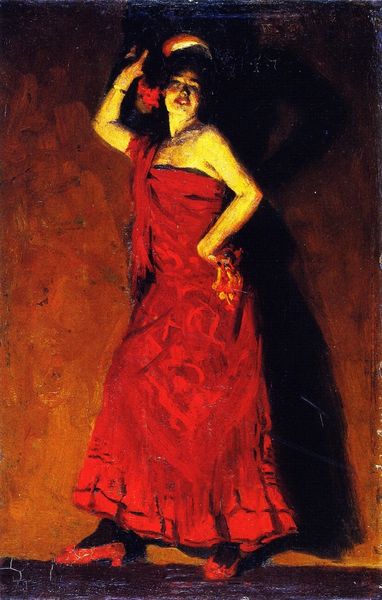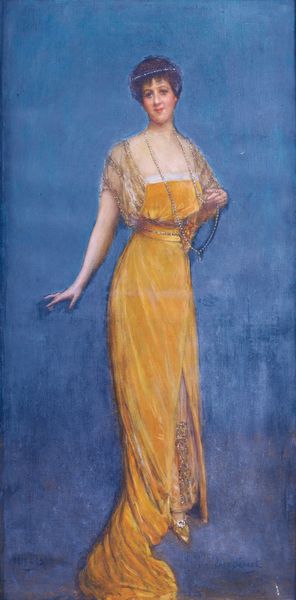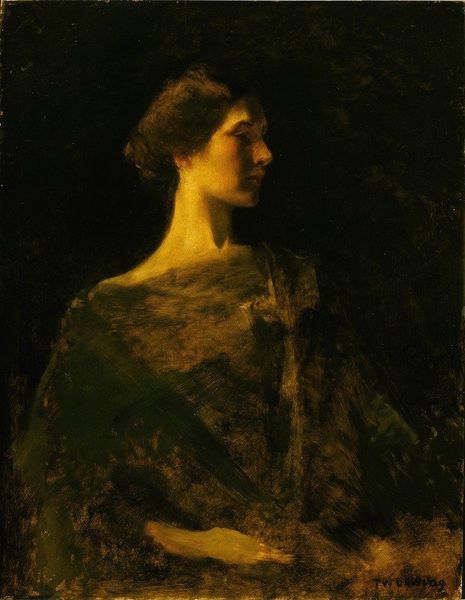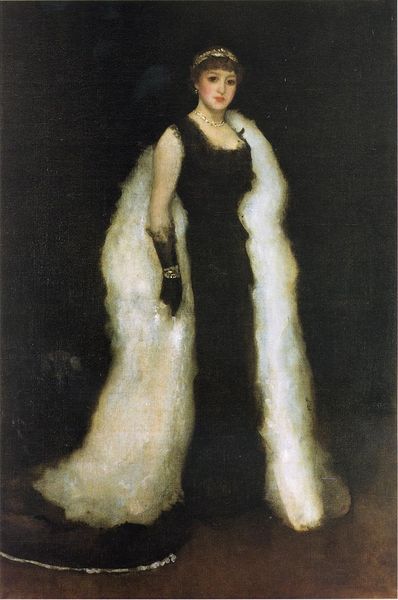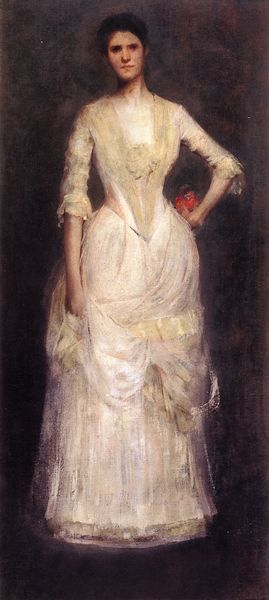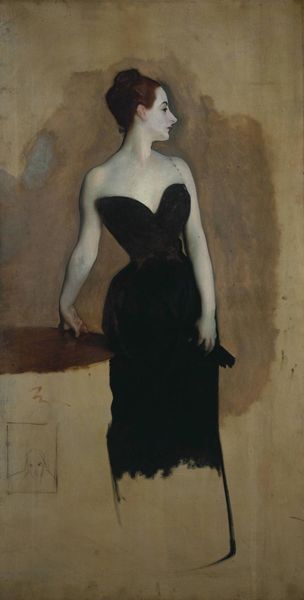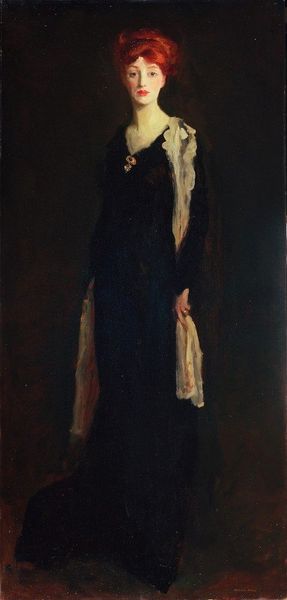
Copyright: Public domain
Curator: This striking work is Robert Henri’s “Spanish Dancer - Seviliana,” painted in 1904. The figure seems almost to emerge from the deep background. Editor: Yes, the immediate impression is one of sumptuous, tactile paint. Look at how the red of her shawl almost melts into the umber background! Curator: The red, of course, speaks to passion, and more specifically, to Spain. We need to acknowledge the history of exoticism inherent in the fascination with the ‘Spanish dancer’ trope that existed at this time. It played into very specific perceptions of femininity. Editor: That's true, yet the materials—the oil paint itself applied so broadly, becomes performative. There's a gestural quality, as if the act of painting mirrors the energy of the dance. Henri doesn't smooth it all out. Curator: Exactly. And let’s consider her pose. She holds castanets, but is momentarily still. What does it mean for a performer to be captured in a moment of pause, a stillness that offers an insight into how identity and gender are negotiated on stage, even within that carefully constructed spectacle? Editor: It brings us back to thinking about labor and its depiction, doesn't it? I mean, the raw canvas becomes almost an active participant. Curator: In these performances there’s often a very specific display of class aspirations too. This piece shows us that cultural performances are never just 'ethnic'; they are also inextricably intertwined with the dynamics of race, class, and even capitalist aspirations. Editor: And with how those things are literally *made* visible via painting. Curator: Precisely. A complex intersection of art, identity, and performance, shaped by historical and social forces. Editor: Well, thinking through the tangible evidence of the materials gives us so much context for engaging with identity and performance!
Comments
No comments
Be the first to comment and join the conversation on the ultimate creative platform.
